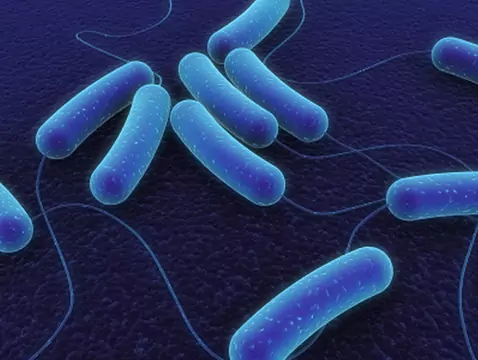
Sexually transmitted diseases: from infection to treatment
Sexually transmitted infections continue to be a significant health problem. In this article, we look at the issues surrounding sexually transmitted diseases, discussing when we can talk about...

Do you suspect you have an STD? Here's what you should do!
STDs, also known as sexually transmitted infections, are an important health problem worldwide. Prevention and, if infected, diagnosis and effective treatment are essential to protect your health and...

Syphilis - a dangerous sexually transmitted disease
It has been known for hundreds of years and under many names: the French disease, the Polish disease (which is what it was called in Russia), franca or syphilis. It is the latter name that is...

Chlamydia trachomatis - causes, symptoms, treatment
Chlamydia trachomatis infections are a common cause of inflammation of the reproductive organs, which can lead to infertility or pregnancy complications. This article provides basic information on...

Drug-resistant gonorrhoea - a disease that can lead to death!
The agent responsible for the development of gonorrhoea is a small bacterium, a gonorrhea bacillus called Nesisseria gonorrheae. It attacks the tuberous epithelium and that which lines the organs of...

Review of venereal diseases. Bacterial venereal diseases - Part 1
Our knowledge of STDs (sexually transmitted diseases) is still poor. We still do not know which diseases we can contract through sex, how they affect our health or even our lives, and how they are...

Review of venereal diseases. Fungal, parasitic and viral venereal diseases - part 2
Sexually transmitted diseases are a very embarrassing topic for many people. Many people know nothing about STDs and do not realise that some of them can be contracted through kissing, sharing...

Lesions caused by the human papilloma virus
TheH. pyloriV - papilloma virus is responsible for the formation of condyloma lesions, but there are also so-called oncogenic subtypes, the consequence of this infection is cervical cancer. Infection...

Herpes - a viral venereal disease - causes, symptoms, diagnosis, treatment
Venereal diseases are those that are transmitted sexually. They are divided into viral, bacterial or fungal. It is worth remembering that every venereal disease requires a detailed diagnosis and...

Venereal disease - causes, symptoms, diagnosis, treatment
STDs are most commonly contracted through sexual contact. However, we should also remember that we can also contract them through simple kissing. A large number of people do not know what symptoms...

Syphilis - causes, symptoms, diagnosis, treatment
Syphilis, otherwise known as syphilis, is categorised as a venereal disease. It is caused by a bacterium called Treponema pallidum, or pale spirochete. It has the ability to spread throughout the...

Ehrlichiosis, a dangerous venereal disease - causes, symptoms, diagnosis, treatment
Ehrlichiosis is classified as a venereal disease. It is caused by a protozoan called Trichomonas vaginalis (protozoan). The disease is much more common in women than in men. The best habitat for the...

Genital herpes
Herpes develops following infection with Herpes virus type 1 or 2. The lesions located on the genitals are in the form of vesicles, with a tendency to form erosions. Infection is most often sexual....

Urethritis
Urethritis belongs to the group of sexually transmitted diseases. Based on its aetiology, it is divided into gonorrhoeal and non-gonorrhoeal inflammation. It usually manifests itself by the...

Symptoms of first and second period syphilis
Most doctors know that a quick and accurate diagnosis of sy philis is not easy. The symptoms of syphilis are ambiguous, especially in the early stages of the disease.

Syphilis - causes, symptoms, diagnosis, treatment
Syphilis is a bacterial venereal disease with high infectivity.

How to diagnose and treat syphilis?
Syphilis, otherwise known as syphilis, is classed as an STD. It is caused by a bacterium called Treponema pallidum, or pale spirochete. It has the ability to spread throughout the human body. Outside...

Syphilis of the nervous system - causes, symptoms, diagnosis, treatment
Syphilis, or syphilis, is a dangerous infectious disease. The agent responsible for the development of the disease is Treponema pallidum. It is contracted during sexual intercourse, although it is...

Possible herpes virus infection
HSV2 virus is present in the genital tract even in remission.



